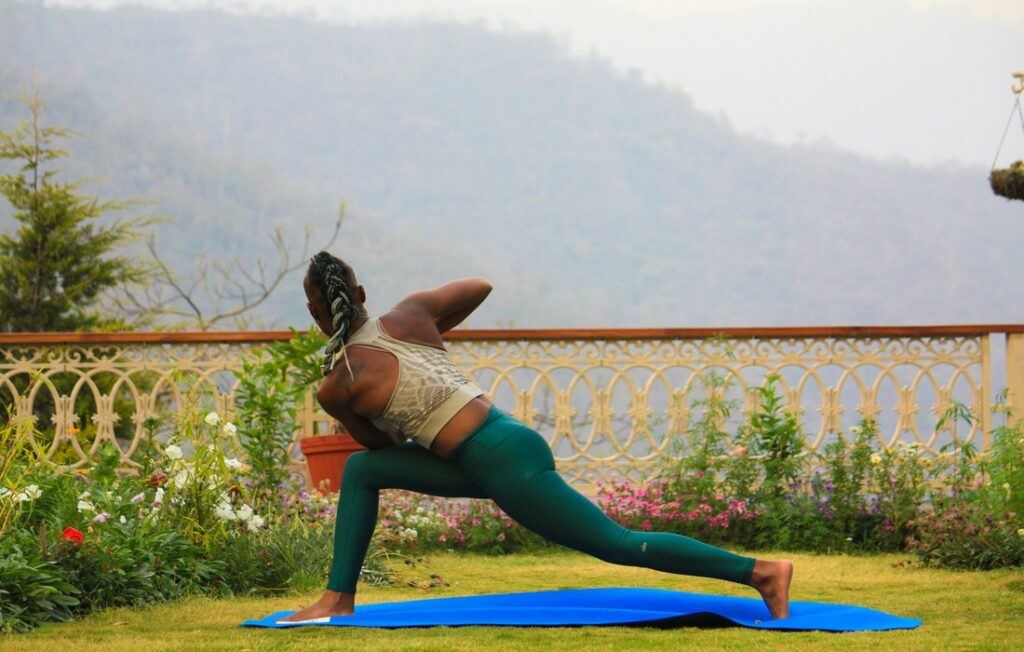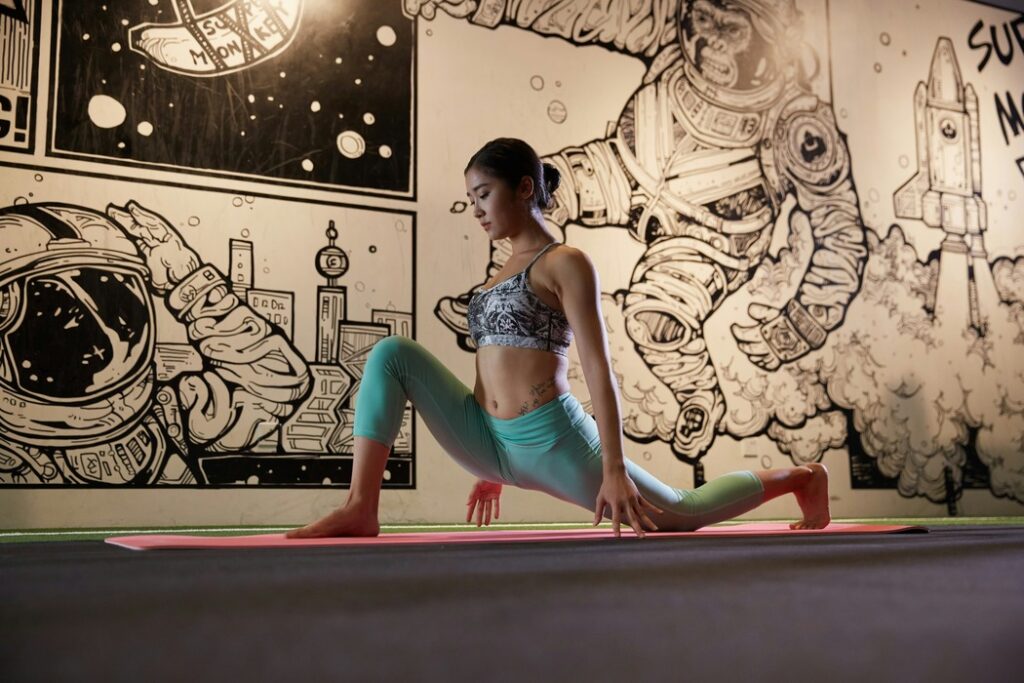
Strengthening Your Foundation Through Mindful Practice
Hatha Yoga is a traditional branch of yoga that focuses on physical postures (asanas), breathing techniques (pranayama), and meditation to cultivate harmony between mind and body. While many people practice yoga for flexibility and stress relief, it also offers remarkable benefits for bone health. This article will explore how Hatha Yoga supports strong, healthy bones and discuss specific poses to incorporate into your practice.
The Science Behind Yoga and Bone Health
Bones are not static structures — they are living tissues that constantly remodel through a dynamic process of breakdown (resorption) and formation. As we age, especially after the age of 30, this balance can shift, leading to a gradual loss of bone density. This natural decline increases the risk of conditions such as osteopenia and osteoporosis, which can lead to fractures, decreased mobility, and overall health deterioration.
Fortunately, lifestyle interventions like regular exercise can make a significant difference — and Hatha Yoga is emerging as a powerful ally in maintaining and improving bone health. Not only does it engage the musculoskeletal system in a mindful and controlled manner, but it also offers a unique combination of physical and hormonal benefits that support skeletal integrity.
1. Weight-Bearing Movements
Hatha Yoga involves a wide range of postures that require you to bear your own body weight — a key factor in stimulating bone remodeling. These weight-bearing movements place mild stress on the bones, which signals the body to strengthen them in response. For example:
- Standing poses like Warrior II (Virabhadrasana II), Triangle Pose (Trikonasana), and Tree Pose (Vrikshasana) activate the leg and hip muscles, increasing bone density in the femurs and pelvis.
- Arm balances such as Plank Pose and Chaturanga Dandasana strengthen the wrists, forearms, and shoulders — areas often prone to fracture in older adults.
- Even seated and twisting postures help engage the core and spine, promoting strength in the vertebrae.
Over time, regular practice can lead to measurable gains in bone mineral density, particularly in weight-bearing areas like the spine and hips.
2. Improved Alignment and Posture
Yoga emphasizes body awareness and structural alignment. This focus not only improves posture but also teaches practitioners how to move in ways that protect their bones and joints from strain and injury.
Proper alignment ensures that the body’s weight is distributed evenly, reducing excessive pressure on vulnerable areas such as the lower back, knees, and hips. It also helps correct postural imbalances that can lead to degenerative wear — for instance, forward head posture or rounded shoulders, which are common in those with sedentary lifestyles.
By improving proprioception (the body’s sense of spatial orientation), yoga reduces the likelihood of falls — a major concern for individuals with weakened bones.
3. Enhanced Circulation
Yoga involves coordinated movement and deep breathing, both of which boost overall circulation. Improved blood flow ensures that oxygen and essential nutrients — such as calcium, magnesium, and phosphorus — are delivered efficiently to bone tissue.
This enhanced nutrient delivery supports bone repair and regeneration. Additionally, healthy circulation helps remove metabolic waste that can accumulate in joints and tissues, which may indirectly support joint comfort and mobility.
4. Hormonal Balance
Hormones play a pivotal role in bone metabolism. Estrogen, for instance, protects against bone loss — which is why postmenopausal women are at increased risk for osteoporosis. Cortisol, the body’s primary stress hormone, when elevated chronically, can accelerate bone breakdown.
Yoga, particularly gentle practices like Hatha Yoga, helps regulate the endocrine system by reducing stress and promoting relaxation. Through practices like mindful breathing (pranayama) and meditation, yoga lowers cortisol levels and fosters hormonal harmony. This reduction in stress-related hormones creates a biochemical environment that supports bone preservation.
Additionally, yoga may support thyroid and parathyroid function, which play a role in calcium regulation and bone remodeling.
How Hatha Yoga Benefits Specific Bones and Joints

As we age, maintaining bone density and joint mobility becomes increasingly important for overall health and independence. While most people associate yoga with flexibility and stress relief, Hatha Yoga also plays a significant role in supporting bone strength and joint function. Specific poses in Hatha Yoga target key skeletal areas—such as the spine, hips, wrists, and knees—offering both preventive and restorative benefits.
1. Spine: Supporting Your Central Structure
Poses like Cat-Cow (Marjaryasana-Bitilasana) and Cobra (Bhujangasana) gently mobilize and strengthen the spine. These movements encourage healthy circulation to spinal discs and help maintain the flexibility and hydration of intervertebral cartilage. Regular spinal extension and flexion, as practiced in these poses, can help prevent or alleviate kyphosis (excessive curvature of the upper back), a common postural issue in older adults.
2. Hips: Building Strength and Stability
The hips are a critical weight-bearing region, and maintaining their mobility and strength is essential for preventing falls and fractures. Hip-opening poses like Butterfly Pose (Baddha Konasana) and Pigeon Pose (Eka Pada Rajakapotasana) increase the range of motion and help release tension in the hip flexors and glutes. Strengthening the muscles surrounding the hip joint enhances stability and reduces the risk of hip fractures—a major concern in aging populations.
3. Wrists: Fortifying Fragile Joints
The wrists are often overlooked until they become a problem, especially after a fall. Poses such as Downward-Facing Dog (Adho Mukha Svanasana) and Plank Pose (Phalakasana) help to bear weight through the hands, stimulating bone strengthening in the wrists and forearms. These postures also build functional strength needed for daily activities like lifting and supporting yourself when getting up from a seated position.
4. Knees: Enhancing Support and Reducing Strain
Knee health is crucial for mobility and quality of life. Poses like Chair Pose (Utkatasana) and Warrior I (Virabhadrasana I) target the quadriceps, hamstrings, and calf muscles, which collectively stabilize the knee joint. Strengthening these muscle groups reduces strain on the knees and supports proper joint alignment during movement.
Key Hatha Yoga Poses for Bone Health
Hatha Yoga offers a wide array of postures that not only promote bone density but also improve posture, flexibility, and balance—factors that are vital in preventing fractures and enhancing daily function. Practicing these poses consistently helps create a strong and stable musculoskeletal foundation.
1. Tree Pose (Vrikshasana)
Benefits: Enhances balance, strengthens the legs and ankles, and stimulates bone growth in the hips and spine. Great for improving coordination and stability.
2. Triangle Pose (Trikonasana)
Benefits: Builds strength in the legs, stretches the hips and spine, and improves lateral flexibility. Engages core stability for better posture.
3. Warrior II (Virabhadrasana II)
Benefits: Strengthens the thighs, hips, and shoulders, increasing lower body stability and endurance. Enhances proprioception and joint awareness.
4. Bridge Pose (Setu Bandhasana)
Benefits: Strengthens the spine, hips, and glutes while opening the chest. Promotes flexibility in the thoracic spine and pelvic alignment.
5. Plank Pose (Phalakasana)
Benefits: Develops strength in the wrists, arms, and shoulders. Also activates the core, which supports the spine and improves functional movement.
The Role of Pranayama in Bone Health
Breathing practices, or pranayama, complement the physical aspect of yoga by enhancing internal physiological balance. Bone health is influenced by circulation, oxygenation, and hormone regulation—all of which are improved through breathwork.
1. Kapalabhati (Skull Shining Breath)
This energizing technique stimulates the circulatory system, helping detoxify the body and deliver oxygen-rich blood to bones and tissues. It can revitalize sluggish metabolism and support cellular regeneration.
2. Nadi Shodhana (Alternate Nostril Breathing)
This calming breathwork practice reduces stress and anxiety, helping to regulate cortisol levels. Lower cortisol means a reduced risk of stress-related bone loss. Additionally, it harmonizes the nervous system, creating an ideal internal environment for healing and balance.\
How Hatha Yoga Complements Other Bone-Strengthening Practices
While Hatha Yoga is powerful on its own, it works best as part of a holistic approach to skeletal health:
- Nutrition: Ensure adequate daily intake of calcium, vitamin D, magnesium, and vitamin K2 to support bone formation and density.
- Strength Training: Complement yoga with resistance-based workouts to further stimulate bone remodeling, particularly in high-risk areas.
- Postural Awareness: Apply yoga’s alignment principles in everyday movements—sitting, walking, lifting—to reduce wear and prevent injury.
- Lifestyle Factors: Avoid smoking and excessive alcohol, both of which negatively impact bone health. Get regular sun exposure (or supplements) for vitamin D.
Tips for Getting Started with Hatha Yoga for Bone Health
If you’re new to yoga or have existing joint or bone conditions, consider the following:
- Start Slow: Begin with beginner-friendly Hatha Yoga classes or private instruction to build a strong foundation and avoid strain.
- Use Props: Blocks, straps, and bolsters help maintain alignment and make poses more accessible, preventing injury or overexertion.
- Be Consistent: Even 15–30 minutes a day of mindful yoga can lead to significant benefits over time.
- Listen to Your Body: Modify poses as needed and avoid any movement that causes pain. Work with a certified instructor if you have osteoporosis or prior injuries.
Final Thoughts
Hatha Yoga is much more than a flexibility practice—it is a comprehensive tool for skeletal longevity and health. By combining weight-bearing movement, mindful alignment, breathwork, and stress reduction, Hatha Yoga offers a safe and effective approach to maintaining bone density, enhancing joint stability, and promoting graceful aging.
Whether you’re seeking to prevent osteoporosis, recover from injury, or simply build a stronger foundation for the years ahead, integrating Hatha Yoga into your wellness routine can make a lasting difference—bone by bone, breath by breath.
Ready to take your yoga journey to the next level? Check our next article How Does Shakti Yoga Help with Spiritual Health?
